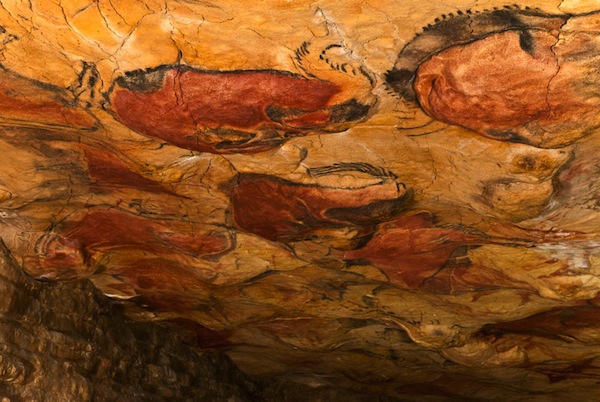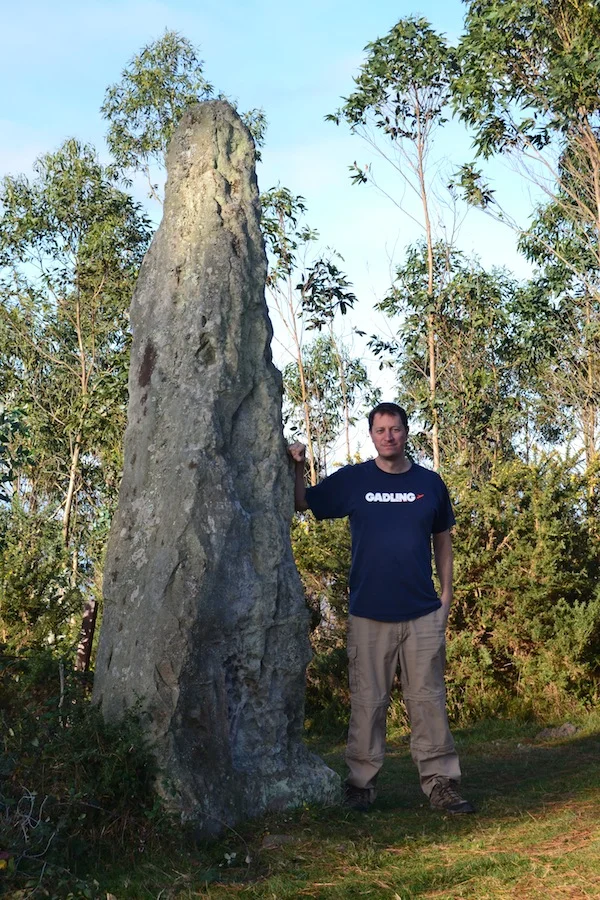Madrid has always been famous for its thriving arts scene. Sadly, the Spanish capital got hit hard by the global financial crisis. For the past few years, madrileños have seen nightlife spots and galleries drop dead like victims of a plague. Thursday night, which had always been called “the first Friday”, became just another weekday with nothing special scheduled. Fridays and Saturdays became shorter, too, with more people choosing to stay home or stay out less.
(above) This giant frog, dubbed "The Frog of Fortune", appeared near Plaza Colón earlier this year.
This had a terrible effect on Madrid’s art scene. While the larger galleries and institutions soldiered on, labors of love such as the arthouse cinema La Enana Marrón and the gallery/café Entrelíneas Librebar fell by the wayside.
Now all that is changing. There’s a new electricity in the air, or one might say that some of the old electricity is back. Thursdays are discernible from Wednesdays now, and the weekends are revving up again. While Spain’s economic woes continue, it seems there’s more money and interest in art.
The Classical sculpture gallery at the Museo Arqueológico Nacional.
Can't-Miss Museums
The biggest news for the mainstream arts scene is the expansion of the Fundación Mapfre. This is one of the many large exhibition spaces owned by major corporations, which perhaps out of a sense of guilt offer top-notch exhibitions for free. Fundación Mapfre has been a Madrid institution for many years and this year doubled its space by opening the Bárbara de Braganza exhibition building with 868 square meters (2,848 square feet) devoted to photography, and a small but interesting model ship museum.
Museum junkies will also want to check out the newly renovated Museo Arqueológico Nacional. Spain’s national archaeology museum was closed for several years and locals were beginning to wonder if it would ever reopen. Now it has, with a more open, better lit floor plan that shows off its extensive prehistoric collection, a sumptuous display of large Roman mosaics, and several rooms dedicated to medieval Spain’s mixture of European and Islamic cultures.
Lomographic photo of Retiro Park. (Courtesy flickr user Ser… Ser…)
Good Things Come in Small Galleries
A few smaller art spaces have cropped up recently, including The New Gallery, which is only a little more than a year old. It specializes in international photography exhibitions. For those who want to go old school, check out the Lomography store, where Soviet cameras that take distinctively off-color, tunnel-vision photos are still the tool of choice. There’s always an exhibition of photographs on display, they sell cameras and accessories, and they are one of the few places left that develops film.
Inside Tipos Infames Libros y Vinos. (Courtesy Tipos Infames Libros y Vinos)
Burgeoning Bookstore Cafes
Madrid has always been one of the literary centers of the Spanish-speaking world, and now there’s a trend of opening bookstore cafes to bring together two of Spain’s loves of chatting over coffee and reading. There are several good ones, including Librería Café El dinosaurio todavía estaba allí, where once a month English-speaking writers give readings and the owner herself is a poet. Atticus Finch is a cozy little place with a small but select collection of books in the front room and a café/art space in the back. Readings, talks, and storytelling sessions happen regularly here. There’s also the spacious Tipos Infames Libros y Vinos (Infamous Types Books and Wine). With a name like that how can you lose?
Still from a production at Microteatro Por Dinero. (Courtesy Microteatro Por Dinero)
A Larger-Than-Life Microtheater Scene
For those with confidence in the Spanish language, check out Madrid’s burgeoning microtheater scene. Microtheaters are tiny spaces that seat only a few dozen audience members or less. You’re often right up against the stage and immersed in the scene. You might even end up being part of it! Some good new microtheaters include Godot and La Pensión de las Pulgas. There’s also Microteatro Por Dinero, which thumbed its nose at the financial crisis by opening in the black year of 2009 and managing to remain in business. It’s housed in an old brothel and has retained its original floor plan with a series of tiny rooms, once rented by the hour, where it’s often just you and the actors.
Street art at Plaza Juan Pujol. The two posters on top are painted on cardboard. Late at night, you’ll sometimes glimpse street artists carrying a ladder as a well as paint. Getting their work in hard-to-reach places has become a badge of pride.
A Thriving Street Art Culture
Madrid has always had an active and skilled graffiti scene. While there are the usual ugly tags, there’s also impressive spray paint work as well as poster and sticker art. Urban art seems to thrive during bad economic times (think New York in the 70s and 80s). Some Spanish street artists have moved away from traditional spray paint and are experimenting with posters, stickers, and even pieces of painted cardboard. With the economy on the up and more shops opening, you’re beginning to see more commissioned street pieces, where shop owners have graffiti artists paint murals on their shutters.
Good sources for what’s going on in Madrid include esMadrid (in English and Spanish), Angloinfo (in English) and CineyTV (in Spanish).














